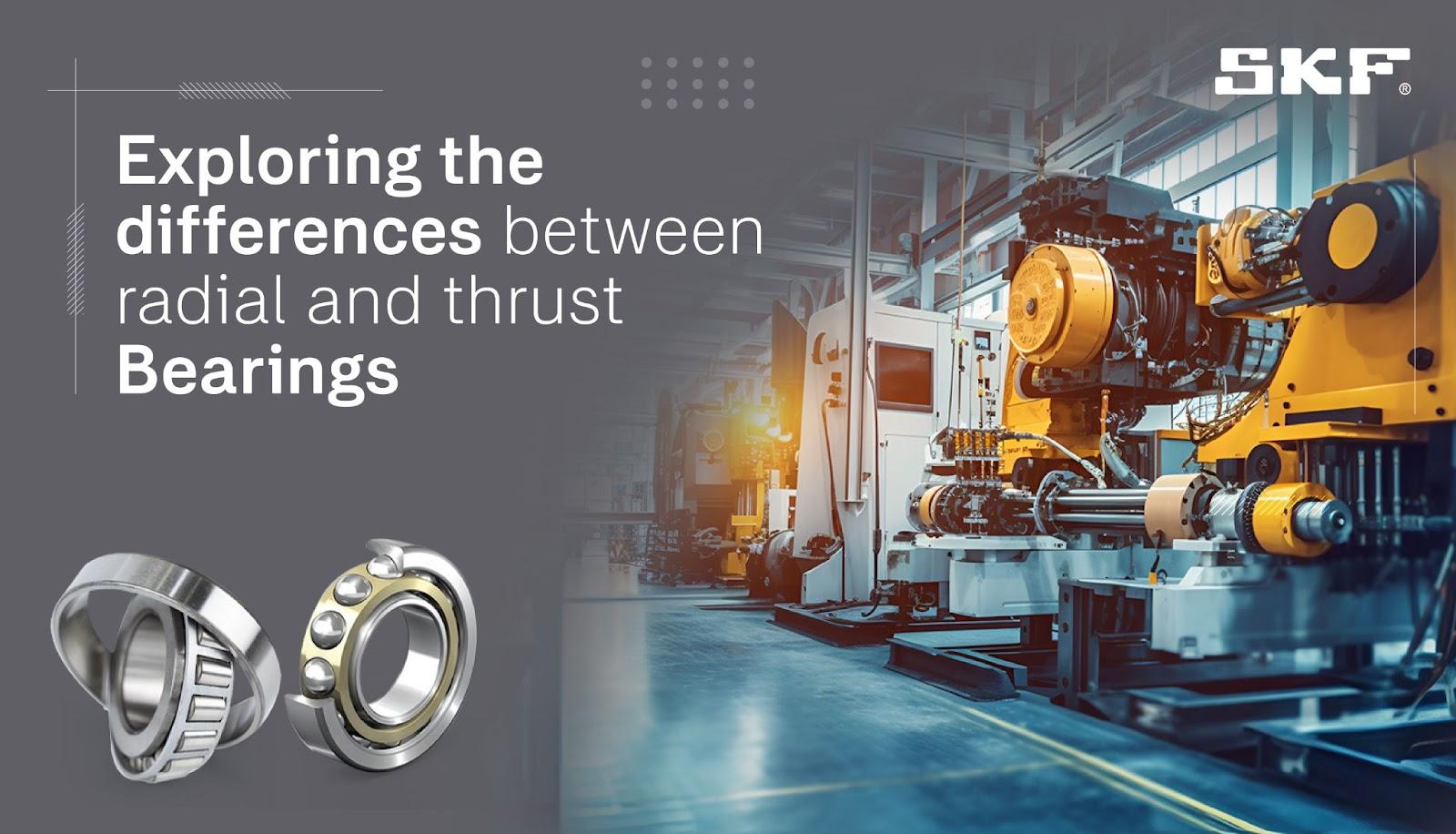Bearings are the most commonly used components in machines and equipment parts. They are designed with precision and engineering and consist of a cage, an inner and outer race, and a row of balls. Bearings in machinery and any component that rotates and functions ensure efficiency and smoothness while minimizing friction.
There are different types of bearings for varied purposes and functions. Each type of bearing is a masterpiece of engineering tailored to specific applications in diverse industries. Two of the bearings are radial and thrust bearings.
Read the complete blog to know more about radial and thrust bearings and how they are different from each other.
What are Radial Bearings?
There are two kinds of loads in machine applications: radial and axial. Radial bearings support radial loads perpendicular to the axis of rotation. These are the ideal bearings commonly used in applications like motors, pumps, fans, and transmissions where rotational motion is involved.
Radial bearings consist of parts like inner and outer races, a cage, and rolling elements like rollers or balls. These rotating elements ensure rotation, minimize friction, and further allow higher efficiency when machines function. Additionally, these rotating elements distribute the load evenly, enabling machinery to be in motion and accelerating operations.
Radial bearings come in multiple variations in terms of design and configuration. Some popular types of radial bearings are deep groove ball bearings, cylindrical roller bearings, spherical roller bearings, and tapered roller bearings. Different types of bearings exhibit varying specifications and depend on factors like load-bearing capacity, precision, and other environmental conditions.
What are Thrust Bearings?
Thrust bearings are bearings designed to support axial loads. These loads occur along the axis of a rotating shaft, and thrust bearings are designed precisely to reduce friction while the machinery is in function. They perfectly support rotational movement along with the shaft.
From industrial machinery to automotive, thrust bearings are utilized in various applications as they provide a low friction interface while also minimizing the chances of wear. This further reduces the need for frequent maintenance. Hence, these bearings are perfectly suitable for axial load applications to improve efficiency and performance.
Difference Between Radial and Thrust Bearings
Here are some of the common differences between radial and thrust bearings on the following basis:
| Basis | Radial Bearings | Thrust Bearings |
| Load capacity | Radial bearings are primarily used to carry radial loads, or they support light and medium load applications. | Thrust bearings support axial loads. |
| Scope of application | Commonly used in motors, pumps, wheels, and other rotating machinery that possess radial loads. | Commonly used in applications like gearboxes, axles, and machine tool spindles. |
| Types | They consist of deep groove ball bearings, cylindrical roller bearings, spherical roller bearings, etc. | They consist of thrust roller bearings and thrust ball bearings. |
| Design | Designed with a cylinder and ring with balls and rollers to accelerate smooth rotation. | Consist of a flat washer with rolling elements, allowing linear movement along the axis of rotation. |
| Friction | These bearings deal with rolling friction. | These bearings deal with sliding friction. |
| Alignment | Deals with misalignments up to certain limits. | More precise alignment. |
| Installation | Perpendicular to a rotating shaft. | Along the axis of a rotating shaft. |
Now that you know the difference between radial and axial loads, choosing the right quality from a renowned company like SKF is crucial. Buying a bearing from a leading manufacturer ensures the machinery's efficiency, performance, and reliability over the years. Depending on the load distribution, you can consider radial and thrust bearings to serve the right purpose. SKF bearings deliver innovation and expertise while reducing downtime and optimizing operations.
